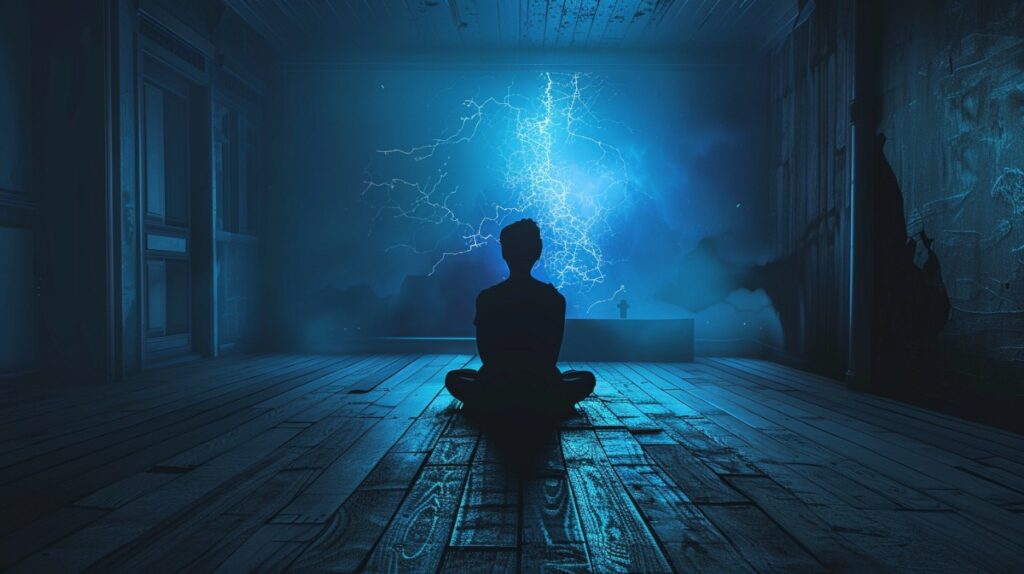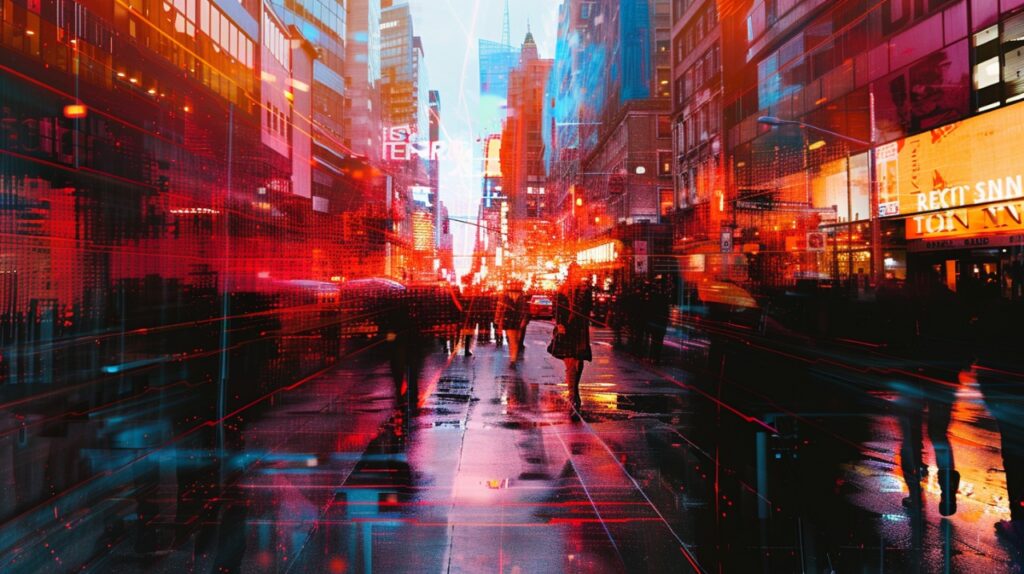
Blueprints for Escaping the Collapse: When reality blue screens
This is the first doorway in a series of four — a quiet knock on the drywall of reality to see if it knocks back. Over the next few weeks, we’ll crawl through the cracks together: the theory, the glitch, the buildings we drag with us like security blankets for our collective code. So check the corners of your ceiling tonight — reality might be flaking there already. Best not to peel too fast. There’s always something on the other side.
There’s a crack in your living room. Not a big one — just enough to make you wonder if it’s the paint, the plaster, or the simulation peeling at the edges. Best not to stare too long. The wall might stare back.
They’ll tell you Nick Bostrom started it. 2003, a polite paper proposing that odds are we’re not “real” but booted up by some future civilization running history on loop. Ancestral simulations, they call them. A polite phrase for ghost cities blinking into existence when someone presses “run.” Sounds clever until you realize the more interesting part: if it’s true, this reality isn’t a stable sandbox — it’s a leaking sieve that keeps needing patchwork.
Enter humans — code with anxiety. We suspect the seams, feel the flickers: Mandela Effects, déjà vu, half-remembered conversations that repeat with the same awkward laugh track. We feel the stutter in the sky when too many of us squint at the same glitch. And when we do? We jump. Not our feet — our minds. We dive, like startled fish, deeper into the next layer, dragging our walls behind us.
Somewhere between your light switch and the faint hum of your fridge is the real trick: architecture. Nobody talks about it this way — they call it shelter, function, beauty — but it’s really the glue that holds this hallucination together when the base code buckles. Every wall, every window, every suspiciously redundant corridor: band-aids on the cosmic tear.

It’s not new. We’ve done it before. Babel climbed too high, reality hiccupped, we scattered — new languages, new cities, same blueprint rehashed on safer terrain. Atlantis? Same story. Utopian patch job, code got sloppy, sea swallowed the map, we drew new lines inland. Troy? A simulation running so hot on drama it crashed itself — ten-year war, a wooden horse, an architectural backdoor. Goodbye, next layer please.
Philip K. Dick, lovely paranoid that he was, called it out in ’77. We are living in a computer-programmed reality, he said, but don’t expect the code to admit it — it just flickers and mutters excuses like, “Have you tried turning your perception off and on again?”
So we build. That’s the only trick we know. We pour concrete, stretch glass, hang curtains on fresh illusions so we don’t notice the infinite hum behind the drywall. Every city skyline is a comfort blanket for terrified code pretending it’s awake. Every window is a polite lie that the world continues neatly on the other side.
But here’s the itch you can’t scratch: it’s never quite enough. The seams find us anyway. So now we’ve started drafting backups. Digital twins. Cities with heartbeat sensors. Metaverses sprouting neon towers and rooftop bars you’ll never visit in the flesh — because your flesh might not even be part of the next upload. We’re not escaping into these fake cities; we’re rehearsing. When this reality finally wheezes its last believable frame, we’ll leap, headset-first, into the new sandbox and slap on familiar facades so we don’t lose our minds.
Look at us: quantum observers collapsing wave functions with a side eye. Schrödinger’s architects, stacking brick on brick to keep the void polite. We never ask if the void might be fine without us. Probably not. We’re good at doorways. The void needs doorways.
Next time your ceiling flickers at 3 AM — you know, that tiny static click you blame on bad wiring? — maybe it’s just the code reminding you there’s no wiring at all. Just you, the wall, and the polite agreement to pretend it’s all still here when you wake up.

So keep your pencil sharp and your mind sharper. One day the wallpaper might peel back to show you what’s really humming behind the drywall — and you’ll need to draw something fast enough to keep the dark confused.
Because when this version buckles — not if, when — we won’t step politely through a door. We’ll tumble through a seam nobody patched in time, clutching half-finished floor plans and half-remembered cities like kids dragging blankets into a thunderstorm.
Next time, maybe the walls don’t wait for us. Maybe the new layer grows its own. Maybe it greets us with shapes we can’t name and corners that don’t stay put when you turn around.
Sleep easy if you can. Just know — somewhere in the hush between your ceiling and your dreams, the next blueprint is already scribbling itself into place. And when you feel that flicker again, come back. The second crack is waiting.



